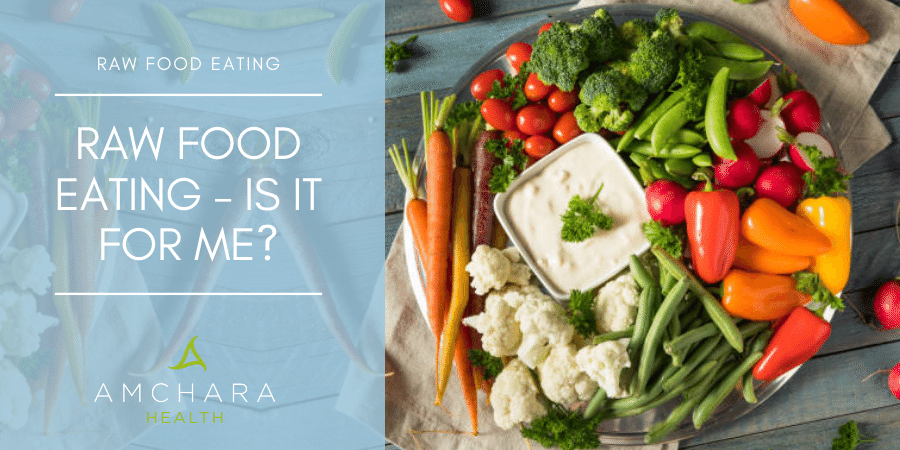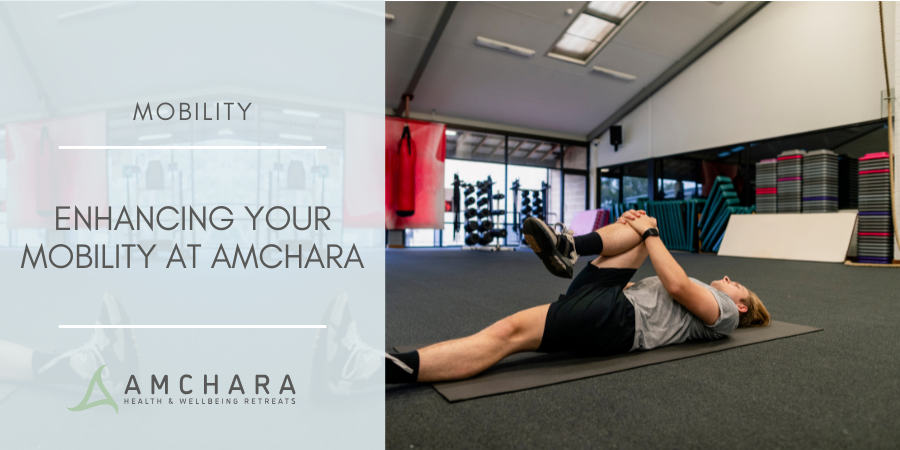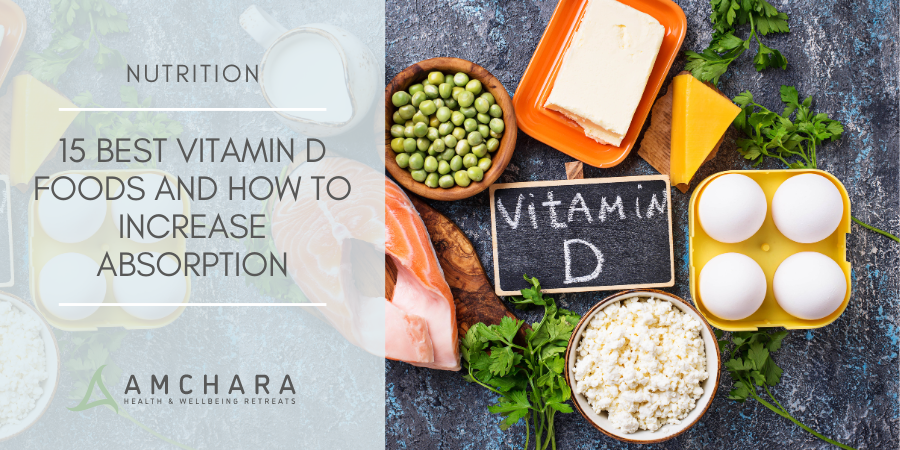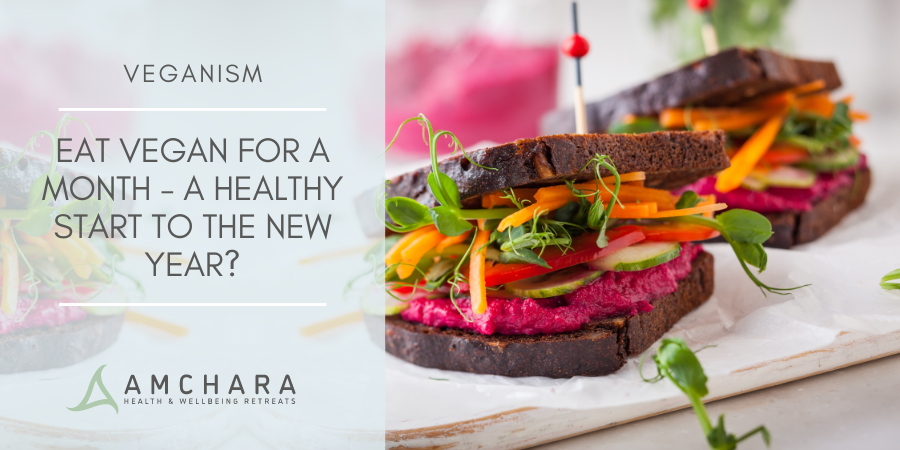Topics Covered in this article:
In this article we will introduce a specific type of plant-based eating, the raw food approach.
Although some people who follow a raw food eating plan do eat animal products, we’ll concentrate on raw vegan eating.
What is raw food?
Strictly speaking, raw food is food which has not been heated to over 40-48°C (104-118°F).
The only heating used in raw food preparation is a dehydrator, which blows warm air over the food to gradually reduce its moisture content.
Over the course of several hours, this makes the food deliciously crispy.
On a raw food eating plan, processed food is avoided, but other meal preparation methods are used such as juicing, blending, soaking and sprouting.
Why eat raw food?
The origins of raw food eating can be traced back to Switzerland at the end of the nineteenth century, when one medical practitioner cured his own jaundice by eating uncooked apples – he then opened a clinic devoted to raw food.
Choosing to eat only raw vegan food will naturally include plenty of fruits, vegetables, seeds and nuts.
The benefits to both your health and that of the planet from eating largely plant-based foods are becoming well known.
Recent research has linked the consumption of a high proportion of plant-based foods with longevity and a reduced incidence of lifestyle diseases (1).
Health benefits of raw food
Eating raw has been linked with successful weight loss, avoidance of heart disease, cholesterol regulation, improvement in digestive health, reduction in inflammation and better skin health.
Raw food has not been processed, so doesn’t contain preservatives, colours, flavour enhancers and other additives, commonly used in commercially available processed foods.
Raw fruits and vegetables contain plenty of antioxidants which neutralise free radicals and prevent them damaging body tissues.
As raw food hasn’t been heated to a high temperature, naturally occurring nutrients are retained and not lost through cooking.
- Enzymes
Your body naturally produces enzymes to help with digestion and they’re also crucial for the thousands of chemical reactions which happen all around the body.
Food also contains plenty of these enzymes, but at around 40°C they start to degrade.
Raw food retains these beneficial enzymes.
This is particularly relevant as we get older because as we age, our ability to produce digestive enzymes decreases.
- Vitamins and minerals
Cooking food loses important nutrients such as the B vitamins and vitamin C.
Boiling green vegetables can result in losing over 50% of the vitamin C (2) – and around 30-40% of the mineral content can leach out into the cooking water when food is boiled.
- Fat
Heating food can also damage fats, especially essential fats in the omega-3 and omega-6 family.
These fats are important for skin and joint health, hormone balance, immune system function and brain health.
Essential fats from plant sources are found in cold-pressed oils, nuts, seeds and spirulina.
Apart from coconut oil, most fats in plants are not stable when heated because they break down and become rancid.
They then produce free radicals which can cause damage to your body’s cells.
- Fibre
Cooking can also reduce the amount of soluble fibre in food – this is the type of fibre that can help manage cholesterol and blood sugar levels.
As a bonus, because raw foods contain good amounts of fibre, you’ll find you feel full more quickly when eating raw than you do with eating cooked foods.
How to eat raw
Although it may seem difficult to eat raw, this is only because we are used to eating predominantly cooked food.
There are many ways to incorporate raw food into your eating, so experiment and you may find you enjoy the new tastes and textures.
Enjoy foods which have not been heated in excess of 48°C, such as:
- Salads
- Cold soups
- Raw vegetables
- Fresh or air-dried fruit. Much commercially available dried fruit is dried using heat unless the label states sun-dried.
- Unpasteurised coconut milk. It’s important to eat unpasteurised foods on a raw food eating plan as pasteurisation involves temperatures in excess of 60°C.
- Raw nuts and seeds. Ideally soak these to reduce the levels of antinutrients they contain.
- Unpasteurised seed and nut milks.
- Sprouted seeds, grains and legumes. Sprouting increases nutrient levels and makes them easier to digest.
- Raw nut butters such as almond, cashew or hazelnut butter. Most commercially available nut butters use roasted nuts, so choose one which is labelled raw, or alternatively make your own. It’s not a good idea to use raw peanuts because they are easily contaminated with natural toxins.
- Cold pressed oils.
- Dried seaweeds.
- Raw green food powders, such as dehydrated wheatgrass.
- Fresh unpasteurised fruit or vegetable juices – an easy way to incorporate raw foods into your day. Make sure you consume fresh juices as soon as they are extracted as once the skin of a fruit or vegetable is broken, the process of oxidation starts and it will begin to lose its nutritional value.
- Fermented foods such as sauerkraut, kimchi and kefir.
- Green smoothies – add your favourite greens to your fruit smoothie. Try not to load your blender with too much fruit and make sure you use plenty of vegetables, or your smoothie will contain a lot of sugar. It’s a good idea also to blend in some protein such as nuts or seeds.
- Vegetable noodles, which are simply spiralised vegetables. Use vegetables such as cucumber or courgette. Spiralisers are cheap to buy, but if you don’t have one you can always use a mandolin or vegetable peeler. Accompany with a raw vegetable sauce and sprinkle raw nuts or seeds on top. Using avocado makes a delicious creamy sauce.
- Dehydrated foods – provided the foods are only heated to a maximum of 48°C. With a dehydrator you can make delicious snacks like kale chips and flax crackers.
- For breakfast, make your own raw cereal. Use fresh nuts, seeds and raw oatmeal, then add chopped fruit.
- Make delicious raw brownies using sun-dried dates, walnuts, almonds, cacao powder and goji berries.
Criticisms of raw food eating
Although eating raw has many health benefits, critics argue the enzymes in food are destroyed by stomach acid, so won’t remain active in your body.
Science has also linked raw eating to reduced lower bone mass (3) and excessive weight loss, although more research is needed in this area.
Research has also found some nutrients are actually easier to absorb if a food is cooked.
For example, lycopene, rich in tomatoes, is far more bioavailable when tomatoes are cooked, especially if they’re cooked with olive oil.
Bear in mind that cooking can also reduce some substances in food which can then impair the absorption of minerals.
Takeaway
Although a pure raw food eating plan does not contain any cooked food whatsoever, most people do not eat 100% raw foods – the majority of raw foodists eat around 75-80% of their food as raw.
Including a certain amount of raw food is a great way to increase the amount of fresh fruit and vegetables you are eating.
Because it’s beneficial to eat a wide variety of food groups, it’s probably best to eat a combination of cooked and raw foods.
Why not introduce some raw foods into your eating plan?
One easy way of eating more raw food is to eat raw on certain days of the week.
Raw foods come into their own during a cleanse or detox – some people choose to cleanse with a combination of fresh juices and raw food, others break a juice cleanse or a water fast with a light raw food meal.
If you would like to find out more about raw food, a stay at an Amchara retreat can include delicious healthy raw food and juices, as well as raw food demonstrations and talks.
Our mission is to provide you with insightful information – we always take an evidence-based approach and aim to provide you with actionable knowledge and tips to help you on your journey to optimal health.
Did you find this article useful?
We would love to know your thoughts.
Have you tried raw eating?
Let us know your favourite delicious raw food treats!
READ THIS NEXT:




